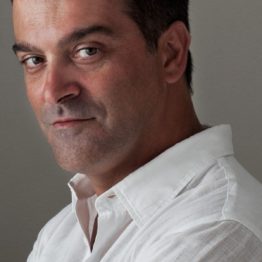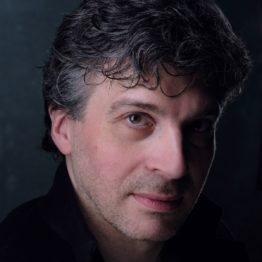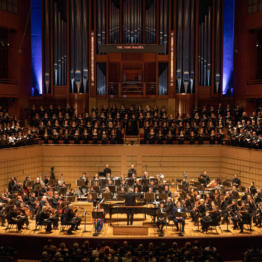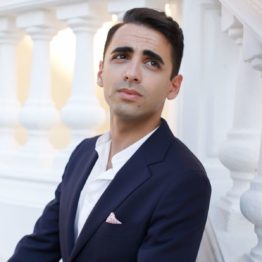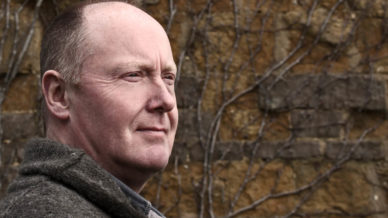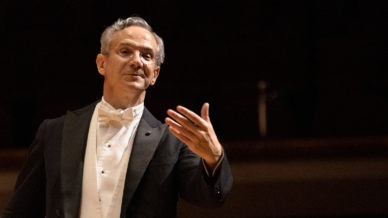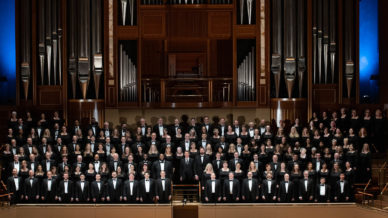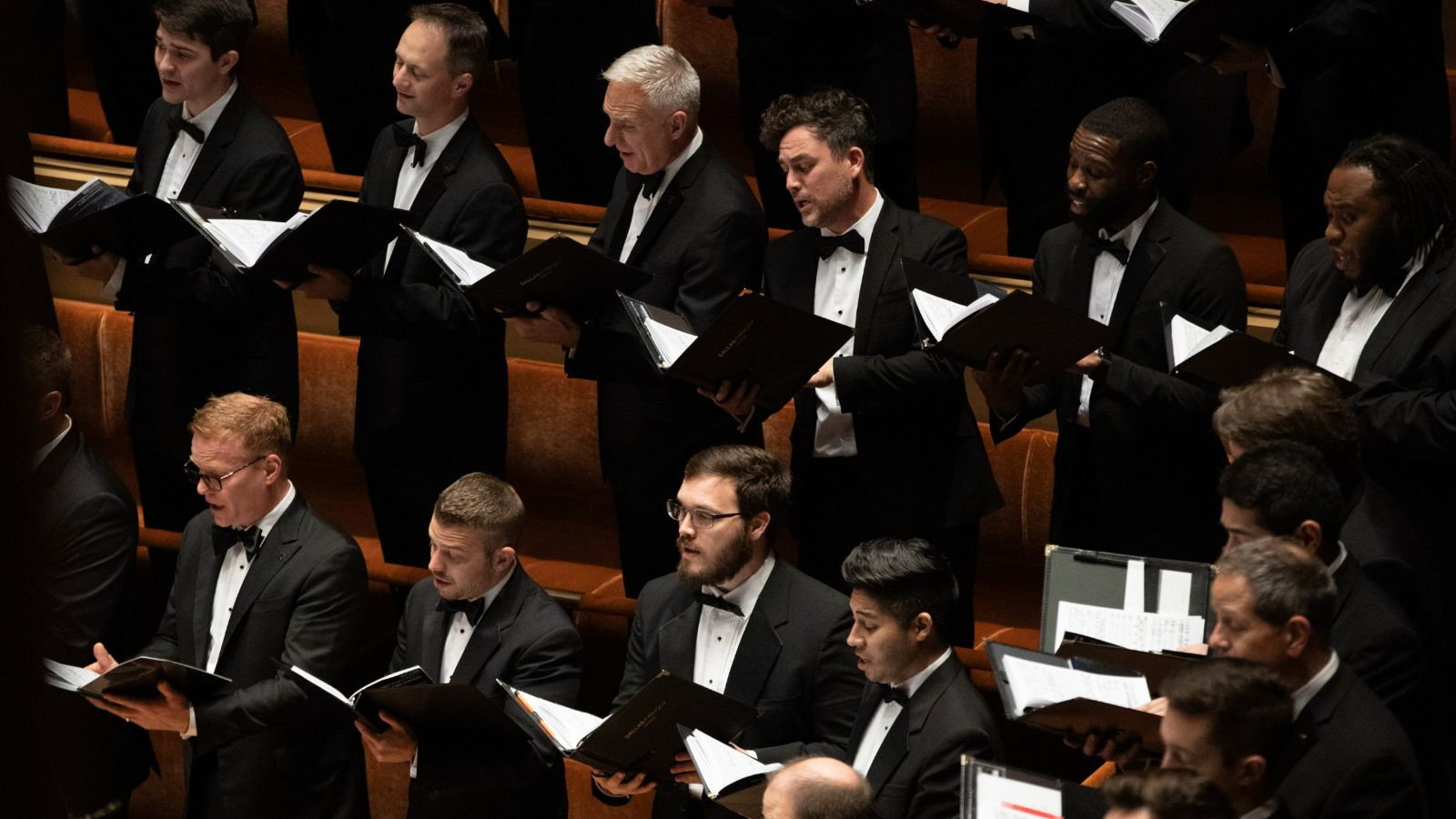

Verdi Requiem
November 10 – 13, 2022
FABIO LUISI conducts
ADRIANA GONZÁLEZ soprano
TAMARA MUMFORD mezzo-soprano
PIERO PRETTI tenor
JOSHUA BLOOM bass
DALLAS SYMPHONY CHORUS
FERDINANDO SULLA guest chorus conductor
VERDI Requiem
Music Director Fabio Luisi has been eager to conduct Verdi’s Requiem since he began his tenure with the DSO. With its white-hot moments of bravado alternating with some of the most serene moments of Verdi’s music, his Requiem is a monumental work. The orchestra, chorus, and virtuosic soloists tell a story filled with whirlwind emotions moving through profound loss, terror, and anger, and ending with a sense of eternal peace. The work is the musical setting of a Catholic Mass, written in memory of Italian poet, philosopher and novelist, Alessandro Manzoni and first performed in San Marco church in Milan. While not a religious man, Verdi filled this work, in memory of Manzoni, with emotional impact and religious fervor that begins and ends in tranquility.
We are thrilled to welcome Otto Edelmann Competition First Prize winner, soprano Adriana Gonzalez; Metropolitan Opera’s Lindemann Young Artist Development Program graduate, mezzo-soprano Tamara Mumford; internationally acclaimed tenor Piero Pretti; and bass Joshua Bloom when they join the Dallas Symphony Chorus and the Dallas Symphony Orchestra to perform this monumental piece.
IMPORTANT NOTES:
There will be no late seating or intermission during this performance. We recommend arriving early to ensure a relaxed concert experience.
The Morton H. Meyerson Symphony Center Restaurants and Concessions are now cashless and accept credit or debit cards only. For an even easier experience, pre-order your drinks and concessions on the Noble App before the show and skip the lines!
Due to unforeseen circumstances, Saturday Evening and Sunday Afternoon Performance Preludes have been cancelled. The concerts will begin promptly at 7:30PM and 3:00PM.

DSO AFTER DARK WITH THE CONCERT TRUCK
NOV 10 | 9 PM | HALL ARTS HOTEL
Please join us after the concert for a free, outdoor performance featuring members of the DSO, Nick Luby and Susan Zhang, and DJ Elkin Pautt. Hors d’oeuvres, cider, and drinks will be served.

Program Notes
by René Spencer Saller
I asked a friend, Patty Kofron, a versatile mezzo-soprano who has sung Giuseppe
Verdi’s Requiem several times, to describe the experience from the performer’s
perspective. “I don’t know if I can express how much more it is than the complexity
of the double choruses, or the beauty and terror of the music,” she said. “When I sing
the ‘Libera me,’ I feel like I am personally begging God to spare me from eternal
damnation… and I’m not even religious. It’s the most powerful thing I’ve ever sung
or will ever sing. As much as I love the Brahms, Fauré, Mozart, and other requiems,
the Verdi puts my own mortality and my maker right in my face.”
You don’t need to be singing to feel a similar rush. You don’t even need to believe in
God. Despite its obvious Judeo-Christian framework, its churchy fugues, and its
incense-steeped Latin trappings, this Requiem deals more with the secular than the
sacred. For long, delectable stretches, if you tune out the Latin text and simply let
the melodies wash over you unmediated, you might convince yourself that you’re
listening to a love duet or an arietta, perhaps a quartet backed by large chorus or
some showstopper from one of his recent operas. Indeed, Verdi finished Aida, a
commission to honor the Suez Canal, in 1871, a few years before the first
performance of the Requiem; the two scores share a similar intensity, a dark
grandeur bleeding into raw emotion.
No wonder the Requiem appeals to the nonreligious: Verdi himself was often
accused of agnosticism. His second wife, Giuseppina Strepponi, described the
composer’s spiritual outlook as a matter of temperament: “Everyone agrees that
…he’s the soul of honesty, he understands and feels every noble and delicate
sentiment; yet for all that, [he] allows himself to be, I won’t say an atheist, but
certainly not much of a believer, and all with a calm obstinance that makes you want
to thrash him.”
Everyone who loves Verdi’s Requiem has a favorite part. The concluding “Libera
me” gets most of the attention, and deservedly so, but highlights abound. Sometimes
it’s the glittering majesty of the “Sanctus” that satiates my brain’s pleasure centers;
sometimes it’s the intimate, chamber-music bliss of the “Lux aeterna.” But the
Requiem is more than the sum of its parts, and most of its power is cumulative.
When the unstoppable “Dies irae” theme returns, it hits us like a sucker punch: we
can’t escape our certain deaths. All we can do, awaiting judgment, is express our all
too human selves.
Verdi does more than resurrect the Requiem form: he re-humanizes it, bringing the
drama back to individual sinners with enormous needs: for grace, for redemption,
for eternal peace, or at least an escape from hellish torment. The singers are
relatable in the same way that opera heroes and heroines are relatable: larger than
life but fatally flawed.
Late-Life Superachiever
Over a six-decade career, Verdi wrote 28 operas, easily half of them masterpieces.
He produced many of his greatest works when he was in his 70s, at a time when 60
was considered old. He was still at the peak of his powers when he died, on January
27, 1901, a few days after suffering a massive stroke. To this day his funeral ranks as
the largest public assembly ever recorded in Italy.
Beyond his genius for indelible melodies, Verdi was a master dramatist. A devotee of
Shakespeare, Schiller, Byron, and Voltaire, he read widely and deeply, always on the
hunt for the next opera plot. He worked closely with his librettists to ensure
minimal flab and maximal feeling. In the world according to Verdi, rage and terror
rule, desire redeems and destroys, and the tenor loves bravely forever.
He was born in Le Roncole (now known as Roncole Verdi), in a rural area then
under the control of France. Although he liked to call himself a peasant, his parents
were innkeepers, with enough disposable income to pay for his private organ
lessons at age four. During his adolescence he lived in Busseto with a patron’s
family, growing close to the patron’s daughter, his music pupil. After he failed the
entrance examination for the Milan Conservatory, his wealthy future father-in-law
paid for three years of private composition lessons.
In 1836, two months after Verdi was appointed director of Busseto’s Philharmonic
Society, he married Margherita Barezzi, his patron’s daughter. They had two
children, both of whom died as babies. In 1840, a year after the successful premiere
of his first opera, Oberto, Verdi’s 26-year-old wife suddenly died, probably from
encephalitis. His next effort, a comedy, was a flop, and he considered giving up. But
in 1842, Nabucco, his third opera, became the first in a long series of overlapping
hits, launching the 29-year-old composer’s international career and securing his
fame.
It was during rehearsals for Nabucco that Verdi met his second wife: the soprano
Giuseppina Strepponi, who stepped into the role of Abigaille at the last minute and
saved the production. Verdi and Strepponi invited scandal by living together “in sin”
(technically, in Paris, Busseto, and finally an estate in Sant’Agata, in his ancestral
Parmesan countryside). They married in secret in 1859, and the union lasted until
her death, in 1897; Verdi died a few years later.
At his funeral, thousands of mourners lined the streets while Arturo Toscanini
conducted a 900-voice choir in the “Va, pensiero” chorus from Nabucco. Although
Verdi was first buried in the Cimitero Monumentale, in Milan, his remains were
relocated to the crypt of the Casa di Riposo per Musicisti, a retirement home for
musicians that Verdi had founded.
Roots of the Requiem
In 1868, soon after the death of Gioachino Rossini, whom he revered, Verdi pitched
a kind of compilation Requiem in honor of the late composer to his publisher, Tito
Ricordi, with the various parts supplied by himself and a dozen of Italy’s other
leading composers. Verdi composed the final “Libera me.” The memorial mass was
not performed in 1869, as originally scheduled, the first anniversary of Rossini’s
death. The complete compilation version of the work wasn’t debuted until 1988.
In 1873, at Verdi’s request, Ricordi returned the “Libera me” score, around the same
time that the Italian novelist and poet Allesandro Manzoni died. Verdi’s grief over
the loss of Manzoni, a hero of the Risorgimento (the 19th-century Italian unification
movement), likely compounded the grief he felt for Rossini. Whatever the source of
these strong emotions, Verdi sought expression in the elegiac: he decided to
complete the remaining movements of the Requiem—everything save “Libera me,”
which he revised significantly. He spent the summer of 1873 composing, or reverse-
engineering, a complete Requiem. He believed in the project so strongly that he
spent his own money printing the sheet music for the first performance, which he
conducted, at the Church of San Marco, in Milan, on May 22, 1874.
Verdi’s Requiem translates the ancient Latin mass for the dead into the vernacular
of Italian opera. Ferocious and crude as a gut punch, tender and transcendent as a
kiss, Verdi’s Requiem revels in the dramatic, or at least doesn’t refute the charge
lobbed by the conductor Hans von Bülow, who dismissed Verdi’s Requiem as “his
latest opera, in ecclesiastical vestments.”
Johannes Brahms, Bülow’s close ally and associate, disagreed. “Bülow has made an
almighty fool of himself,” Brahms said after taking in Verdi’s Requiem. “Only a
genius could have written such a work.”
Verdi, for his part, tried to distinguish his Requiem from his previous works for the
stage. “One mustn’t sing this Mass in the way one sings an opera,” he explained, “and
therefore phrasing and dynamics that may be fine in the theater won’t satisfy me at
all, not at all.”
Theatricality aside, Verdi taps into the divine by way of the carnal. All the best
evangelists understand the link between the loins and the great hereafter. As for
theological matters, he was an agnostic and loath to get too preachy. Maybe that’s
why his lead quartet often sounds like pairs of lovers singing to other lovers. He
understood divine mercy through his art, those melodies that sear our souls like
sudden truths.
In Memory of Two Great Men
Verdi’s “Libera me” was originally written to honor Gioachino Rossini (1792–1868),
the composer Verdi once called “a glory of Italy.” Verdi called Manzoni’s 1827 novel
I promessi sposi (The Betrothed) “not only the greatest book of our epoch, but one of
the greatest ever to emerge from a human brain.” He called Manzoni himself a
“saint.”
Later, when Manzoni died at age 88—coincidentally, the same age at which Verdi
himself would die almost 30 years later—he remembered his contribution to the
compilation Requiem and realized that he could build upon this promising
foundation.
On June 3, 1873, Verdi wrote to Ricordi of his plans: “I too would like to
demonstrate what affection and veneration I bore and bear to that Great Man who is
no more, and whom Milan has so worthily honored. I would like to set to music a
Mass for the Dead to be performed next year on the anniversary of his death. The
Mass would have rather vast dimensions, and besides a large orchestra and a large
chorus, it would also require… four or five principal singers…. I would have the
copying of the music done at my expense, and I myself would conduct the
performance both at the rehearsals and in church.”
Verdi asked Ricordi to obtain permission from the mayor of Milan. After the project
was approved, Verdi got to work. By using the music that he had written for the
earlier compilation Requiem, he would need only about an hour’s worth of
additional music to frame and complete it. He composed the settings for a multipart
“Dies irae” and other sacred texts, and finished it on April 10, 1874. He printed the
score at his own expense, as promised, and conducted the first performance in Milan
on May 22, one year after Manzoni’s death. Verdi’s original title: “Requiem Mass for
the anniversary of the death of Manzoni, 22 May 1874.”
Varieties of Requiem
Technically speaking, a Requiem refers to a musical setting of the Latin Mass for the
Dead. Sometime after 1450 and possibly as late as 1470, the Franco-Flemish
composer-turned-priest Johannes Ockeghem wrote an early, incomplete polyphonic
rendition, minus the Sanctus, Agnus Dei, and Communion. Many significant Requiem
settings followed, from the 15th century onward, including Mozart’s iconic
unfinished composition from the months, indeed hours, leading up to his death in
1791. Closer to Verdi’s time, Luigi Cherubini composed a stellar pair (1816 and
1836), and Hector Berlioz contributed another even more famous one, sometimes
called the Grande Messe des morts (Great Mass of the Dead; 1837). Verdi would have
been familiar with all those composers’ works, although his own Requiem was less
rooted in the liturgical.
Verdi responded to the Latin text by locating its emotional core, the dramatic
significance of each singer’s moral confession. He offers no comforting lies, no
confident speculation. Let other composers traffic in the theological; Verdi’s heart is
with the human: the soprano, pleading in terror for her salvation, sinful but shining,
shining. The tenor, the mezzo, the bass-baritone: all kissed by the holy, implicated
and yet innocent.
A Closer Listen
I. In the opening movement, an appeal on the behalf of the recently departed for a
peaceful rest, the chorus sings from the perspective of the mourners. Prefaced by
austere low strings, the singers begin with the standard lines “Requiem aeternam
dona eis, Domine” (Grant them eternal rest, O Lord), which the chorus and orchestra
intone with a hushed gravitas. Verdi translates the Lord’s promise of endless light
into the luminous language of late Romanticism, turning a grief-laden hymn into an
operatic anthem. The four solo singers join the chorus and orchestra for a jubilant
“Kyrie eleison” (Lord have mercy).
II. The doomy and demonic second movement, the nine-part “Dies irae” (Day of
Wrath), slashes and burns through a terrifying series of scenarios wherein the
sinners individually confront their wretched souls. What awaits us after death?
Eternal perdition or a joy so perfect that the most celestial fugue can only
approximate it? The singers roar, wail, whisper, shriek, and hiss; the orchestra
invests each scene with the appropriate mood and color.
The “Dies irae” is based on a poem about Judgment Day commonly attributed to
Thomas of Celano, a 13th-century Franciscan monk. In his setting of the ancient text,
Verdi squires us through all the stages of grief. Against punishing bass drum and
shrieking piccolo, and preceded by apocalyptic brass fanfares, the choristers
describe the day that fire consumes the world. Verdi’s melodies do 90 percent of the
persuasion, and his Technicolor scoring does the rest. Only a robot could resist the
“Recordare,” in which the soprano and the mezzo-soprano sing a lustrous Mozartian
rhapsody. Other highlights include the godlike trumpet fanfare of the chorus-driven
“Tuba mirum”; the sensuous grip of “Liber scriptus”; the delicate, wind-driven
pastorale of “Quid sum miser”; and the pathos-drenched “Lacrymoso,” for solo
quartet and chorus, the sinner’s tearful plea for salvation.
III. The solo quartet sings the “Offertorium,” a light-rinsed, lullaby-like testament to
the creator’s tender mercies. Here the four singers describe the holy radiance that
God promises to bestow on Abraham and his descendants.
IV. The “Sanctus,” a resplendent double fugue for two choruses, is sung from the
angelic perspective: divinity casting a fond downward glance at the suffering
humans. The angels’ joy seems almost explosive, in contrast to the anguish of the
human characters: “Holy, holy, holy, Lord of Hosts! Heaven and earth are filled with
your glory!”
V. Against spare orchestral accompaniment, the chorus, the soprano, and then the
mezzo-soprano sing the “Agnus Dei”: “Lamb of God, who takes away the sins of the
world, grant them rest.”
VI. Sometimes a cappella and sometimes accompanied by shimmering strings and
delicate winds, the mezzo-soprano, tenor, and bass deliver the luminous prayer “Lux
aeterna” (Light eternal). The violins are divided into six parts to enhance the
celestial effect.
VII. The soprano returns, with chorus, for the transcendent “Libera me,” which
redirects our attention to the singular terrified sinner. On one level, you can
appreciate the final movement as an aria, a gracefully emotive outpouring of bel
canto splendor. At its climactic midpoint, the soprano’s high C rips through the
chorus to remind us of her individual suffering. The chorus responds, a soothing
balm made of light. A wild fugue develops, jagged with accidentals, propelled past
terror into panic. Is the sinner consoled or even redeemed by this onslaught of
beauty, or simply distracted from the potential terrors of the afterlife? Did she do
enough—will we have done enough?—to atone?
Verdi respects us too much to speak for a God he wasn’t entirely sure even existed.
He puts his faith our collective capacity to figure it out for ourselves. The Requiem
ends with the soprano and chorus crooning so softly that they might as well be
whispering, “Libera me”: Deliver me.
Into what, who can say?



